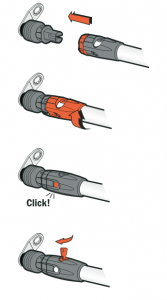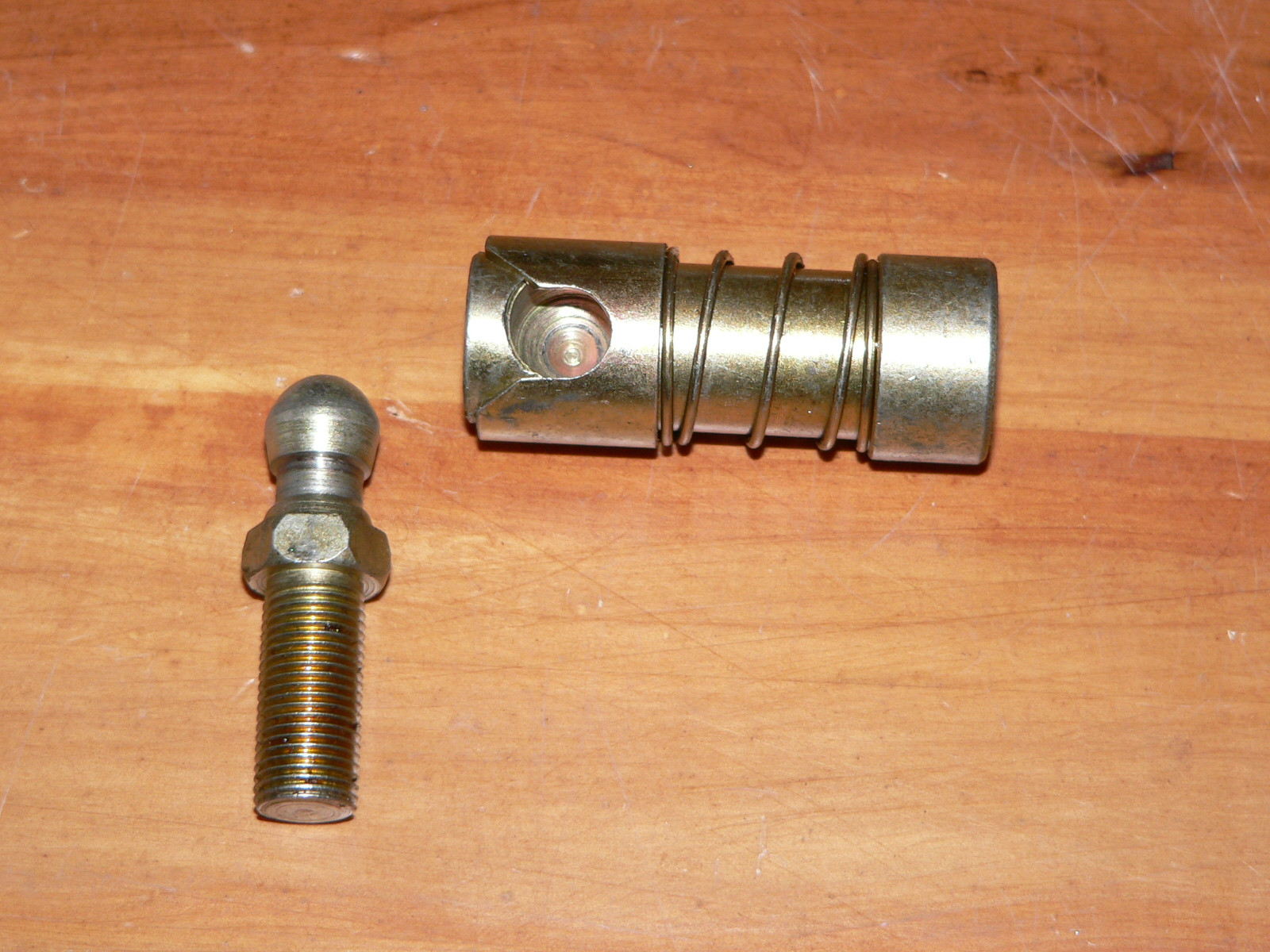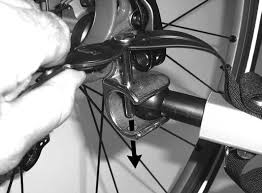Based on a design I saw on the net some time ago, here’s mine (now briefly tested on the road):

It attaches near the wheel axle, to the left chain stay and saddle stay. (A single clamp would pivot around the chain stay, so I added a second clamp linked to the first one with a connector, which keeps the first clamp from moving.) The design could easily be modified to attach to the saddle post, but I wanted to keep the baggage rack free, and some sources claim stability is better with a low-mounted drawbar.
The clamps are standard pipe clamps; I just replaced the threaded tongues with wing nuts so no tools are necessary to attach or detach the trailer. I left the rubber part in place to protect the paint of my bike. There’s a bit of give between the hitch and the bike, but it doesn’t seem to be a problem so far. Nothing is mounted permanently on the bike, so the trailer can be attached to pretty much any bike.
The rest are three swivel casters (one each for the yaw, pitch and roll axis). The wheels were removed as we just need the ball bearings. There’s also a right angle connector between the pitch and yaw axis. For the draw bar I took a square aluminium tube and cut two slots into it, then slid the fork of the swivel caster into it and secured it with a screw, using the existing hole. I needed to drill a second hole to prevent the assembly from bending at the joint (which otherwise happens easily, as the link needs to support the weight of the trailer). This does not seem to be a problem with the pitch/roll swivel casters, although a similar two-hole solution could be constructed here.
The draw bar has a 45° bend in it and attaches to the left side of the trailer (not shown in the picture). The trailer was built using two front forks; the draw bar slides over the shaft of the left fork and is secured with two screws.
All nuts (except for the wing nuts) are self-locking. For the bolts that go into the clamps I used Loctite to prevent them from coming off. For the screws that have the wing nuts on them I might do the same, or put a self-locking nut on the end. Either way I would need slightly longer screws: currently they are M6×30, I would need M6×35 (as M6×40 would get dangerously close to the spokes).
I am thinking of putting a rubber tube around the whole assembly, as the parts probably do not handle moisture and road grime very well.






